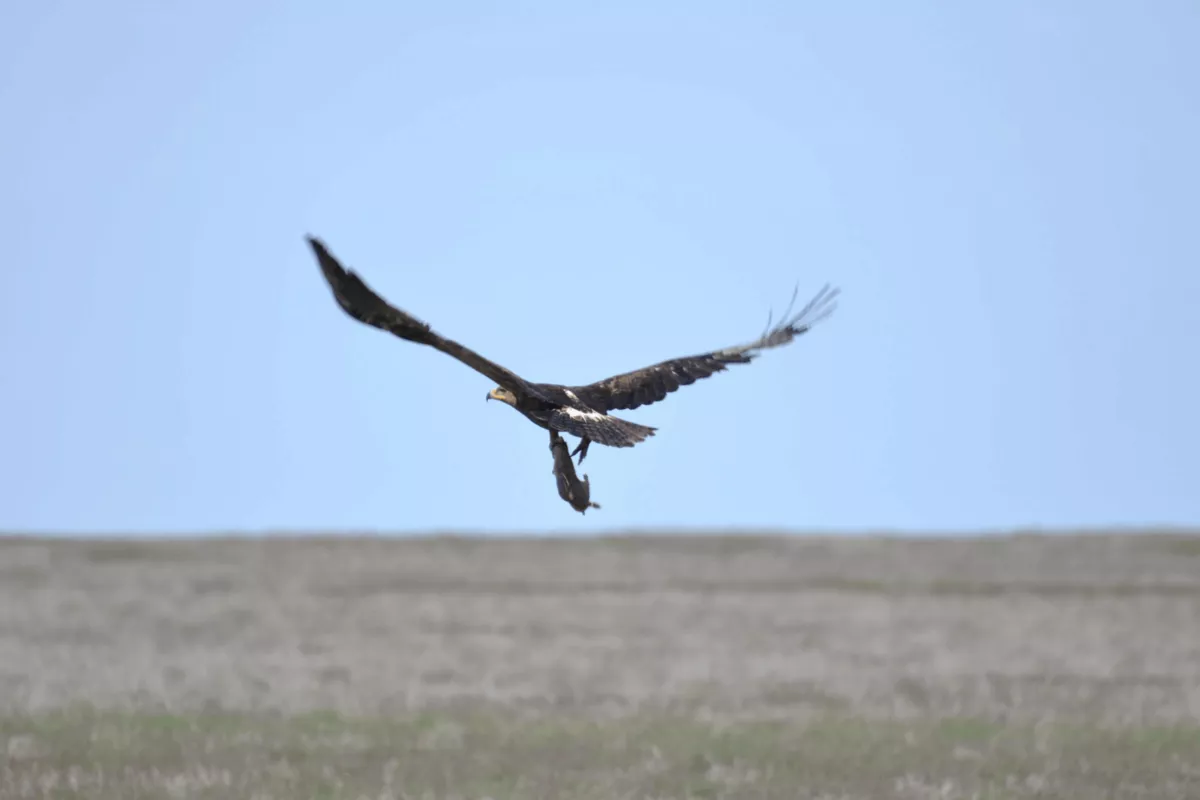
Photo credit: Irina Grigoryeva, ACBK
Nine young steppe eagles tagged with GPS trackers in Kazakhstan have begun their first migration to wintering grounds, marking an international effort to study and protect one of the region’s most iconic birds of prey, The Caspian Post informs via The Astana Times.
In the summer of 2025, experts from the Association for the Conservation of Biodiversity of Kazakhstan (ACBK) equipped nine eaglets in western Kazakhstan with lightweight, solar-powered GPS trackers, reported the organization’s press service on Oct. 16.
Each device, weighing around 30 grams, functions like a tiny backpack attached between the wings, allowing researchers to monitor the birds’ movements, migration routes, and potential threats, such as poaching or electrocution on power lines. The average lifespan of each tracker is five years.
The eaglets began their migration in September. Eight birds have headed west toward the Caucasus, following the Afro-Eurasian flyway, while one took a southern route through Uzbekistan.
Their journey may cover up to 30 countries, stretching from Kazakhstan to Africa and the Middle East, where the species winters in Saudi Arabia, Ethiopia, and Kenya.
Alongside field research, ACBK is also promoting public awareness. This summer, the organization released a new illustrated book with support from the UK government and The Earthshot Prize.
The event coincided with World Migratory Bird Day, observed globally on Oct. 11, highlighting the importance of preserving migratory species.
Steppe eagles, large raptors native to the open grasslands and semi-deserts of Eurasia, rely heavily on Kazakhstan’s ecosystems - up to 85% of the global population nests within the country, making it a critical stronghold for the species’ survival.
Share on social media
